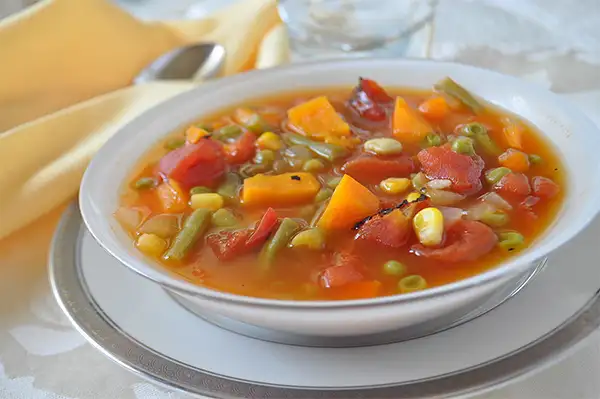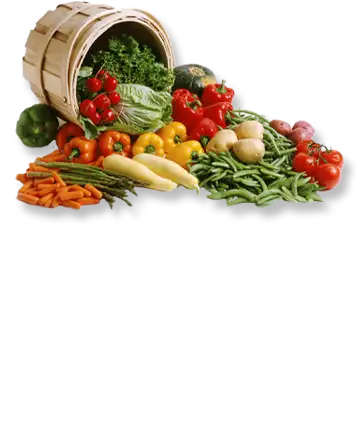A Celebration of Comfort in a Bowl
Get ready to stir, season, and savor because National Homemade Soup Day is simmering on the stove and ready to serve! Observed with gusto every February 4th, this delightful day is not just a celebration but an ode to the ultimate comfort food: homemade soup. From the zesty tang of a tomato bisque to the soul-soothing embrace of chicken noodle, there's a soup out there for every mood, taste, and occasion.
In the grand culinary pantheon, homemade soup holds a special place. It's the gastronomic equivalent of a warm blanket on a chilly evening or a heartfelt chat with an old friend. It’s about more than just food; it’s about memories, traditions, and a little bit of kitchen alchemy. Whether you're a wizard with a stockpot or someone who considers adding pepper to be haute cuisine, today is your day to shine.
National Homemade Soup Day invites us to celebrate the diversity and creativity of soups from around the world. It's a day when creamy chowders, spicy broths, and hearty stews take center stage, each telling a story of cultures, family recipes passed down through generations, and personal culinary adventures (or misadventures, as the case may be). It’s a day to experiment with that avant-garde recipe, revisit an old family favorite, or finally figure out what to do with that exotic vegetable you impulsively bought at the grocery store.
So, whether you're ladling out bowls of your famous lentil soup, trying your hand at a gourmet French onion recipe, or just cracking open a can and calling it a day (we won’t judge), National Homemade Soup Day is about embracing the joy and simple pleasures that come from a humble bowl of soup. Let's dive into a day filled with flavor, fun, and the universal language of soup!

A Brief History of Soup
Soup, quite possibly humanity’s first comfort food, has been bubbling away for tens of thousands of years. Long before blenders, ladles, and shiny copper stockpots made their way into our kitchens, our resourceful ancestors were simmering ingredients in rudimentary vessels over open fires. In fact, the origins of soup stretch back to 20,000 BC, when humans were first experimenting with boiling water using hot stones dropped into animal skins or clay pots. If you think stone soup is just a folktale, early soups were quite literally rock solid.
By 6,000 BC, our culinary forebears were evolving beyond mere survival cooking. Evidence from ancient China suggests that early chefs combined grains, vegetables, and meats to craft hearty broths. Simultaneously, Mesopotamian and Egyptian civilizations used soup as a clever way to soften tough cuts of meat and utilize every scrap of available food – nothing went to waste, not even chicken feet. Soup was both practical and versatile, a lifesaver in lean times and a centerpiece in feasts.
Fast forward to the Ancient Greeks and Romans, who turned soup-making into an art. Greeks were especially fond of kykeon, a kind of grain-based broth flavored with herbs and sometimes wine – the world’s first “drinkable dinner.” Meanwhile, the Romans elevated soup into something almost ceremonial. They devoured broths brimming with lentils, onions, and exotic spices that were more flavorful than a Mediterranean sunset. As Roman legions expanded their empire, they brought their soups with them, ensuring soup’s place in culinary history from Britain to North Africa.
Then came the Middle Ages, a time when soup gained even more prominence. It was during this era that sop, the root word for “soup,” emerged. In medieval Europe, broth-soaked chunks of bread were a popular dish among both peasants and nobles. The humble “sops” were so beloved that they became synonymous with comfort and nourishment. It wasn’t long before the French began to refine these rustic creations into the delicate potages and consommés that would inspire chefs for centuries to come.
The 16th century was a turning point when soup crossed oceans and continents thanks to trade routes and exploration. Spices from the East, tomatoes from the Americas, and potatoes from the Andes all made their way into bubbling cauldrons, transforming soup into an ever-evolving dish reflective of global fusion. Native American tribes were already masters of their own soups and stews, simmering ingredients like maize and venison to create hearty meals long before European settlers arrived.
By the 18th century, soup wasn’t just food – it was medicine. French physician Julien Offray de La Mettrie famously declared that “soup is to the body what love is to the soul.” Doctors often prescribed broths to patients as a cure for everything from fevers to melancholy. In fact, the word restaurant itself originated in 18th-century Paris, where soup vendors sold restoratifs – soups meant to “restore” weary souls. These humble stalls eventually evolved into modern restaurants, where soup remained a staple of the menu.
The Industrial Revolution brought canned soup to the masses. In 1897, chemist Dr. John T. Dorrance of Campbell’s Soup Company introduced condensed soup, forever changing how we consumed this timeless dish. Suddenly, soup was available anytime, anywhere – a steaming bowl of comfort that could be summoned at the twist of a can opener. While purists may scoff at canned varieties, few can deny the impact it had on making soup accessible to busy households.
Today, soup transcends culture, class, and cuisine. From the spicy kick of Thai tom yum to the robust richness of Italian minestrone, every country has its own version of this liquid delight. Soup tells stories of migration, resilience, and innovation, evolving with us while maintaining its core identity as the ultimate comfort food. Whether it’s the delicate finesse of a French onion soup crowned with bubbling cheese or the heartiness of a Texas chili, soup is proof that simple ingredients, when simmered with care, can become something extraordinary.
 So, the next time you sip a spoonful of homemade goodness, remember – you’re partaking in a tradition as old as time. Soup connects us to our ancestors, our cultures, and, most importantly, to each other. Who knew history could taste this good?
So, the next time you sip a spoonful of homemade goodness, remember – you’re partaking in a tradition as old as time. Soup connects us to our ancestors, our cultures, and, most importantly, to each other. Who knew history could taste this good?
Celebrating National Homemade Soup Day
National Homemade Soup Day is the perfect excuse to don your apron, break out the stockpot, and get simmering. Here’s how to make the most of this soup-erb day:
- Soup Swap: Host a soup swap with friends or colleagues. Everyone brings a pot of homemade soup, and you all get to sample a smorgasbord of flavors.
- Soup-er Recipes: Experiment with new recipes. Ever tried a chocolate and chilli soup? Today could be the day!
- Soup Kitchen Volunteering: Embrace the spirit of sharing by volunteering at a local soup kitchen or making extra soup to share with neighbors in need.
- Soup and Stories: Combine soup with storytelling. Share family recipes or the history behind your favorite soup.
Fun Facts to Slurp Up
Soup might seem simple, but it’s brimming with surprises that go beyond the bowl. From record-breaking cauldrons to cultural quirks, soup has earned its place in the history books, dinner tables, and even world records. Whether you’re a trivia buff or just someone who loves a good slurp, these fun facts will add an extra dash of flavor to your appreciation for this timeless dish. So grab your spoon, settle in, and prepare to sip on some soup-erb knowledge!
- Soup Etiquette: Did you know that in some cultures, slurping your soup is a sign of enjoyment and respect for the chef?
- Soup Records: The largest-ever bowl of soup, according to the Guinness World Records, was made in 2010 in Ecuador, weighing in at over 5,000 kg. That's a lot of soup!
- Health in a Bowl: Many homemade soups are packed with nutrients, making them a healthy option for any meal.
- A Soup for Every Culture: Almost every culture in the world has its own soup specialties – from Russian borscht to Mexican pozole.
National Homemade Soup Day isn't just about celebrating a dish; it's about embracing the warmth, comfort, and unity that a simple bowl of soup represents. It's a day to experiment, share, and indulge in one of the most versatile and beloved dishes known to humankind. So grab your spoon – or slurp loudly, if culturally appropriate – and dive into the delicious world of homemade soup!
Please Share our Content







 So, the next time you sip a spoonful of homemade goodness, remember – you’re partaking in a tradition as old as time. Soup connects us to our ancestors, our cultures, and, most importantly, to each other. Who knew history could taste this good?
So, the next time you sip a spoonful of homemade goodness, remember – you’re partaking in a tradition as old as time. Soup connects us to our ancestors, our cultures, and, most importantly, to each other. Who knew history could taste this good?








 "Sláinte!" is a traditional Irish expression used as a toast, equivalent to "Cheers!" in English.
"Sláinte!" is a traditional Irish expression used as a toast, equivalent to "Cheers!" in English.